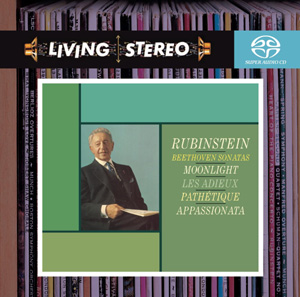 The history of Western music is a history of exploration of forms. This statement is the end result of a chain of thought sparked by John Briggs’ comment, in his notes on Beethoven’s Sonata No. 23, the “Appassionata,” that Beethoven, at this point in his career, was self-confident enough to ignore “Haydnesque” traditions of form, noting that “he experimented tirelessly in all directions, as Haydn had done before him.”
The history of Western music is a history of exploration of forms. This statement is the end result of a chain of thought sparked by John Briggs’ comment, in his notes on Beethoven’s Sonata No. 23, the “Appassionata,” that Beethoven, at this point in his career, was self-confident enough to ignore “Haydnesque” traditions of form, noting that “he experimented tirelessly in all directions, as Haydn had done before him.”
I smiled at the irony in that, and then the truth of it hit me: from Monteverdi and Scarlatti to Riley, Penderecki and Pärt, Western music has always hovered at the edges, pushing at the boundaries of “traditional” forms until they break. (I think this is as true of the vernacular and folk music as it is of art music. Think about it.)
On a related note, I have said in other contexts that a composer’s piano music is somewhat akin to a painter’s drawings: the minimal means employed bring a kind of transparency to the artist’s thought, whether the product is a sketch or a polished and complete work. I don’t think anyone could consider Beethoven’s piano sonatas anything other than “polished and complete” (except possibly Beethoven, but artists are funny that way). I think they can also be considered a bit edgy, at least in context. Keep in mind that Beethoven was in his late teens at the outbreak of the French Revolution and the major portion of his adult life was lived during the resulting European wars. If nothing else, it was a period of immense social and artistic upheaval. He also, more or less single-handedly, recast the vocabulary of Haydn and Mozart into that of Schubert and Schumann, and built the foundations for nineteenth-century musical giants as disparate as Wagner, Brahms, and Berlioz, all of whom claimed direct descent.
So, what to say about Arthur Rubenstein’s rendition of these four sonatas? Both the works and the pianist were staples of the concert hall, and likewise staples of the recorded music library. I don’t know that I would go so far as Louis Biancolli, who states in his somewhat effusive notes that “once again Beethoven has found the perfect spokesman and kindred soul.” Quite honestly, I prefer a somewhat drier approach to Beethoven’s music, but Rubenstein has insights here that we should treasure. That is not to imply that I see this as a historical document: interpretations of masterpieces are always as much a matter of fashion as of insight and scholarship, and Rubenstein was somewhat less prone than many soloists to extravagance in his interpretations. Since it’s Rubenstein, it’s ridiculous to think that the performances could be anything less than intelligent and sympathetic. What is most remarkable is the clarity of Rubenstein’s expression, the awareness of the overall shape of the works, and the warmth and fluidity throughout that are ample reward for listening.
Definitely a worthy addition to our basic library of classical music.
Includes No. 14 in C Sharp Minor, Op. 27, No. 2 (“Moonlight”); No. 26 in E Flat, Op. 81a, (“Les Adieux”); No. 8 in C Minor, Op. 13 (“Pathétique”), No. 23 in F Minor, Op. 57 (“Appassionata”).
(Sony BMR Music Entertainment, 2006 [orig. RCA Red Seal])
